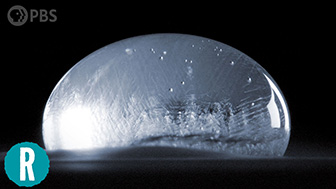Sugar-free gummies are delicious, low on calories and … technically laxatives? After some Amazon reviews of a major brand’s sugar-free gummy bears went viral for all the wrong reasons, the product was discontinued entirely. Reactions producer Andrew dives into the science to figure out how he can make delicious, sugar-free gummies without the uncomfortable side effects.
Sources:
- Sugars, Sweet Taste Receptors, and Brain Responses
- Genes from the TAS1R and TAS2R Families of Taste Receptors:
- Structural basis for perception of diverse chemical substances by T1r taste receptors
- Taste Preferences
- Sugars, Sweet Taste Receptors, and Brain Responses
- Artificial sweeteners – a review
- How Artificial Sweeteners Work
- Characterization of the Binding Site of Aspartame in the Human Sweet Taste Receptor
- The Skinny On Sweeteners
- Science of Cooking—Sucralose
- Intense sweeteners, taste receptors and the gut microbiome: a metabolic health perspective
- Sucralose: An Overview
- ARTIFICIAL SWEETENERS-A REVIEW
- Intense sweeteners, taste receptors and the gut microbiome: a metabolic health perspective
- Molecule of the Week Archive—Saccharin
- What Happens When Chemists Don't Wash Their Hands
- What is Stevia?
- Steviol glycoside biosynthesis
- Interaction model of steviol glycosides from Stevia rebaudiana (Bertoni) with sweet taste receptors: A computational approach
- How is stevia metabolized by the human body?
- Atomistic mechanisms underlying the activation of the G protein-coupled sweet receptor heterodimer by sugar alcohol recognition
- Eat Any Sugar Alcohol Lately?
- What Gummy Bears Have in Common with Laxatives
- Gastrointestinal Disturbances Associated with the Consumption of Sugar Alcohols with Special Consideration of Xylitol: Scientific Review and Instructions for Dentists and Other Health-Care Professionals
- How fake sugar can lead to overeating
- Rats get fat, but we may get lucky
- Trick or Treat? How Artificial Sweeteners Affect the Brain and Body
- Re‐evaluation of thaumatin (E 957) as food additive
- Science of Thaumatin
- Identifying the interactions between natural, non-caloric sweeteners and the human sweet receptor by molecular docking
- Positive Charges on the Surface of Thaumatin Are Crucial for the Multi-Point Interaction with the Sweet Receptor
- Thaumatin—an overview
- Neotame: The Next-Generation Sweetener
- Effects of the Artificial Sweetener Neotame on the Gut Microbiome and Fecal Metabolites in Mice









